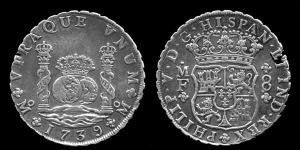
By David Liechty
In 1863, Congress authorized the Treasury to receive “deposits of gold coin and bullion” in exchange for “certificates” payable on demand, having quasi-legal-tender status (§5, 12 Stat. at 711) (Act of 3 March 1863, ch. 73, 12 Stat. 709 ). Consistent with the spirit of the times, Congress allowed the Treasury to issue gold certificates in excess of physical holdings by 20% (id.). These fractional-reserve gold certificates were discontinued in 1875, but non-fractional-reserve certificates were authorized in 1882 and 1900.
In the 1878 Bland-Allison Act, Congress authorized issue of silver certificates, as well, in exchange for deposited coin (Act of 28 February 1878, ch. 20, §3, 20 Stat. 25, 26 ), and in the Silver Purchase Act of 1890, Congress required the Treasury to purchase silver bullion directly using silver certificates (Act of 14 July 1890, ch. 708, §§1-3, 26 Stat. 289, 289). These certificates were originally redeemable in either silver or gold coin, at the Treasury’s discretion, but in the Coinage Act of 1900, redemption was restricted to gold (Act of 14 March 1900, ch. 41, §7, 31 Stat. 45, 47).
Fourteen years after the start of the Civil War and suspension of specie payment, and ten years after the end of the war, Congress passed the Resumption of Specie Payments Act of 1875 (Act of 14 January 1875, ch. 15, 18 Stat. 296). In this act, Congress directed the Secretary of the Treasury to resume “rede[mption], in coin, [of outstanding] United States legal-tender notes”, but set the date for resumption to begin at January 1, 1879. When Greenbacks eventually became redeemable, their value increased until it was nearly at par with silver coin, which then came back into circulation.
Coinage during this period became a battle ground between competing political and commercial interests. In the Coinage Act of 1873 (Act of 12 February 1873 ch. 131, 17 Stat. 424 ), Congress shifted “the unit of value” from the silver dollar to the “one-dollar [gold] piece”, introduced a heavier silver “trade-dollar”, discontinued coinage of the 1837 “standard” silver dollar, and maintained free coinage for gold while requiring payment for the full cost of silver coinage. This scheme did not last long, however, with Congress dropping the legal-tender status of the “trade-dollar” in 1876 (J. Res. No. 17, 22 July 1876, §2, 19 Stat. 215, 215), and again authorizing a “standard” silver dollar in the Bland-Allison Act of 1878 (Act of 28 February 1878, ch. 20, 20 Stat. 25). The “trade-dollar” was abandoned altogether in 1887.
The Silver Purchase Act of 1890 directed Treasury to purchase 4.5 million ounces of silver using certificates as outlined above, but coinage of this silver was limited to the amount needed to actually redeem presented certificates (§3, 26 Stat. at 289). In another 1890 act, Congress “prohibited” the gold “dollar” created as the “unit of value” in 1873 and withdrew it from circulation (Act of 26 September 1890, ch. 945, 26 Stat. 485). In 1893, Congress repealed the 1890 silver bullion purchase (Act of 1 November 1893, ch. 8, 28 Stat. 4), and in 1898 it directed Treasury to coin the bullion already purchased and introduce it into circulation (Act of 13 June 1898, ch. 448, §64, 30 Stat. 448, 467).
The statutory “unit of value” pendulum swung back to gold in the Coinage Act of 1900. Congress reestablished the 1873 “one-dollar [gold] piece” as the “standard unit of value”, and required that all other “forms of money issued or coined by the United States shall be maintained at a parity of value with this standard” (Act of 14 March 1900, ch. 41, §1, 31 Stat. 45, 45). This established the “gold standard.” As indicated above, this act made notes issued under the 1890 Act, previously payable in either gold or silver coin, payable in gold coin only, and it also authorized a general exchange of previously-issued bonds, payable in gold or silver, for bonds payable in gold only (§2, §11, 31 Stat. at 45, 48).
Maintaining silver coin “at a parity” with gold coin of specified value, in this case equal to the 1837 “standard” silver dollar, resulted in an arguably constitutional dual-metallic system, rather than the monometallic “gold standard” at which its supporters aimed (see Edwin Vieira, Pieces of Eight: The Monetary Powers and Disabilities of the United States Constitution (2002) at 527-529).
David Liechty is an attorney who is currently studying for a Phd in Constitution Studies. He is interning with Solari this summer.

